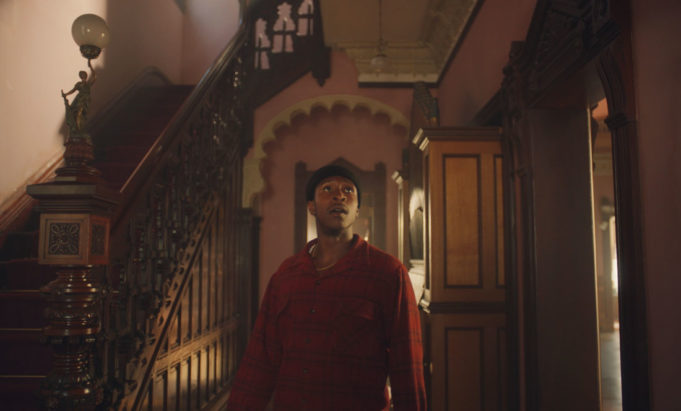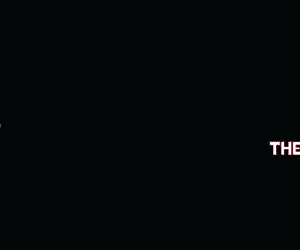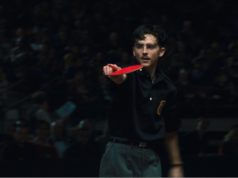Of all the great African-American movies I’ve seen in this decade, The Last Black Man in San Francisco is the hardest to categorize. It’s a disquisition on gentrification, a family dynastic saga, a visual tone poem, and a love letter to the city laced with an appreciation of its flaws. It’s also a movie about putting on a stage play. It’s a thing of mystery and wonder, and it feels like nothing else.
The main character is a house, a gorgeous three-story Victorian affair on Golden Gate Promenade and Fillmore Street, with balustrades, fish scales, gold trim, and a spire with a “witch’s hat” roof. Part-time nurse’s aide Jimmie “J-Bo” Fails IV (Jimmie Fails) is obsessed with this house because he grew up in it and because his grandfather built the place himself. Jimmie hasn’t lived in the place since the 1990s, when his deadbeat father (Rob Morgan) lost the property, but he and his aspiring playwright best friend Montgomery (Jonathan Majors) trespass on its grounds to do free maintenance work, to the endless irritation of the house’s present owner (Maximilienne Ewalt). When she’s forced to move out in an estate dispute, J-Bo and Mont seize the chance to break in and squat in the empty place, which beats living out of one room with Monty’s blind grandfather (Danny Glover).
Just marvel at first-time director Joe Talbot and the precision of his eye and ear. He borrows techniques from the avant-garde films of Charles Burnett and Julie Dash to force us to see this oft-photographed city with fresh eyes. His striking visuals frequently echo the famous slopes of San Francisco’s hills, as Jimmie observes his aunt’s new husband (Daewon Song) trying out his skateboard, or as Jimmie rides that same board with Monty running alongside while people walk their dogs or make art in the background. Adam Newport-Berra’s lyrical cinematography makes the film worth seeing by itself — look at the bit where our two heroes step off a city bus into a solid wall of fog. Emile Mosseri’s strings-and-brass score provides music to match the rolling, vertiginous scenery. The film is rich, allusive, dense, and almost as beautiful as the city it’s set in.
Underneath all of this is a story that could have come from Ibsen or Chekhov — indeed, the house could be Jimmie’s cherry orchard. He sees himself as the holdout against a wave of tech millionaires buying up homes in the area. A friend (Mike Epps) concurs: “All these white people moving in here, they standin’ in a kitchen where some dude got shot.” A tour guide on a Segway (Jello Biafra) glosses over the neighborhood’s past, which includes unsavory truths about both J-Bo’s family and the sordid history of race relations in this left-wing haven of tolerance. The energies come to a head in a deeply moving scene when Mont uses the house’s attic to put on his play, which becomes both a memorial service to an acquaintance of theirs who was killed (Jamal Trulove) and a way of calling out J-Bo on his fixation with the property. In the end, a house is just a structure, and a city is just a collection of structures. Any city that prices out people like J-Bo and Mont doesn’t deserve them, for they are the city’s soul.
The Last Black Man in San Francisco
Starring Jimmie Fails and Jonathan Majors. Directed by Joe Talbot. Written by Joe Talbot and Rob Richert. Rated R.












